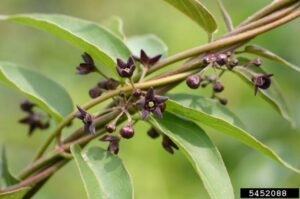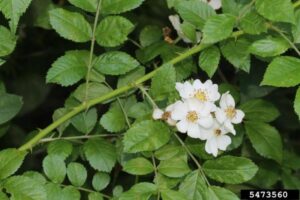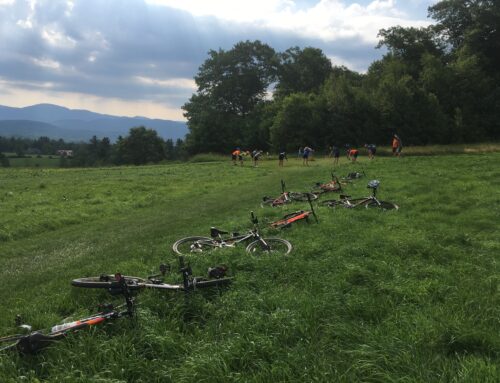Invasive Plant Update
The Catamount Outdoor Family Center (COFC), located on the Catamount Community Forest (CCF), is home to a diverse range of native flora and fauna. However, like many other locations in Vermont and beyond, native species in the CCF are competing with invasive species for life sustaining resources. Often our native species are ill adapted to win this battle and they need our help in monitoring and mitigating the spread of these invasive threats.
What is an invasive species?
An invasive species is something that did not originate in the habitat that it is found in now and was introduced into that area. “Invasive species are primarily spread by human activities. Many species are introduced intentionally for reasons like agriculture, medicine, sport, decoration, land stability, and biological control. In today’s globalized world, people and goods travel around the world very quickly, and they (humans) often help facilitate the movement of invasive species unintentionally or accidently… Without natural predators in their introduced environment, combined with their high reproductive ability, invasive species can quickly become widespread and out-compete native species.” (VTInvasives.org)
Does Catamount OFC do anything about these invasives?
Invasive species management in the CCF is spearheaded by the Catamount Community Forest Committee and the Chittenden county forester, Ethan Tapper. This fall, Ethan is doing invasive species management by treating the invasives with an herbicide that is applied individually to targeted plants. Herbicide treatment at this level (approximately one-tenth to one-hundredth of an ounce [or less] per plant) is not expected to affect any non-target plants or vegetation or to pose any risk to wildlife, pollinators, or human foragers. Per EPA guidance, areas treated with herbicide will be closed to the public until the chemical is dry – usually 1-2 hours. After the chemical is dry, these areas are considered safe for people and trails will be reopened. (Ethan Tapper)
Why is this management important?
“Invasive species can change the composition of native ecosystems. Native plants and wildlife may not have evolved defense mechanisms against the invader; alternatively, native species may not be able to compete for needed resources with a species that has no predators. This leads an invader to spread quickly and perhaps take over an area. Invasive species change not only the way natural systems look but also the way they function. Infestations can disrupt forest succession, species composition, water absorption and circulation, nutrient cycling, or even create toxic growing conditions for other plants and animals” (VTInvasives.org).
Infestation rates by acreage of the main invasive terrestrial plants at the CCF
Common Buckthorn:
- High infestation (2,000 – 50,000 stems per acre) – about 20 acres
- Moderate infestation (200 – 2,000 stems per acre) – about 30 acres
- Light infestation – about 30 acres

Japanese barberry:
- High infestation (2,000 – 50,000 stems per acre) – about 3-5 acres
- Moderate infestation (200 – 2,000 stems per acre) – about 20 acres
- Light infestation – about 50 acres

Honeysuckle:
- High infestation (2,000 – 50,000 stems per acre) – about 5 acres
- Moderate infestation (200 – 2,000 stems per acre) – about 25 acres
- Light infestation – about 50 acres

Bittersweet Buckthorn:
- Moderate infestation (200 – 2,000 stems per acre) – about 25 acres
- Light infestation – about 20 acres

It is “important to remember with these numbers that these acreages overlap. Overall, I would consider about 40 acres of the CCF to have a heavy infestation, about 20 acres to have a moderate infestation and perhaps 30 acres to have a light infestation. Other invasives include: Black Swallowwort, Multiflora Rose, Glossy Buckthorn – several plants of each (species) seen.” -Ethan Tapper



Get involved today!
To learn more about invasive species in Vermont, visit: VT Invasives
Follow the Catamount Community Forest’s facebook page to stay up to date on management activities at the CCF and learn about upcoming volunteer opportunities!



